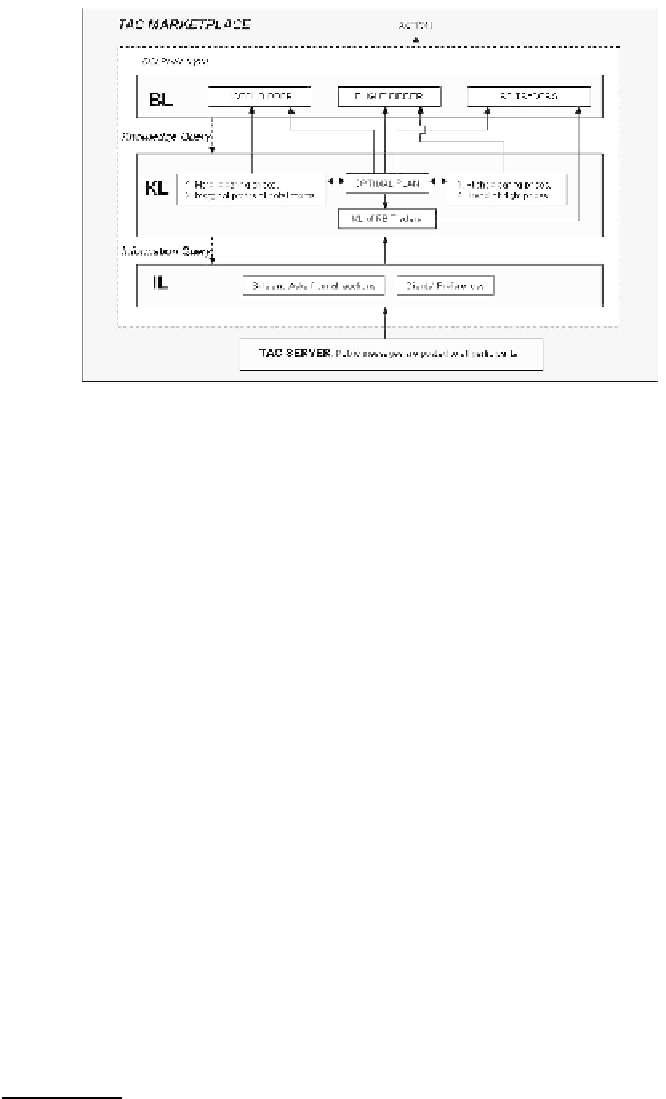Information Technology Reference
In-Depth Information
Fig. 2.
Structure of the Dolphin strategy for the TAC Travel Game
siders as currently the most profitable offer price in the market). The target price
(which is the market knowledge from the KL) is then used along with the agent's
limit price,
v
n
i
(
t
k
)
,i
, obtained from the IL and relayed through the KL, in a set of
bidding rules in the BL. The latter then decides what offer,
<bid
i
|
ask
i
,silent>
,
the agent
i
submits.
Having discussed how the IKB model can be applied to existing strategies for the
CDA, we consider in the next section how we can use our framework to engineer a new
trading strategy given a market mechanism.
5
Design a Trading Strategy for the TAC Using the IKB
Here, we describe
10
how we employ our IKB framework to design a novel strategy for
the TAC
11
. This competition involves a number of software agents competing against
each other in a number of interdependent auctions (based on different protocols) to
purchase travel packages over a period of 5 days (for the TACtown destination) for
different customers. In more detail, in a TAC Travel Game (each lasting 9 minutes),
there are 8 agents required to purchase packages for up to 8 customers (given their
preferences) and that compete in 3 types of auctions which we describe next.
1.
Flight auctions
. There is a single supplier for in-flight and out-flight tickets over
different days, with unlimited supply, and ticket prices updating every 10 seconds.
Transactions occur whenever the bid is equal to or greater than the current asking
price of the flight supplier.
10
We only provide a brief description of the formalisation due to lack of space.
11
Our IKB framework is employed in designing our agent,
Dolphin
which was ranked 4th in the
final of the TAC Travel Game 2005.

